Matador Network's Blog, page 885
April 8, 2020
Andrea Bocelli Easter live stream
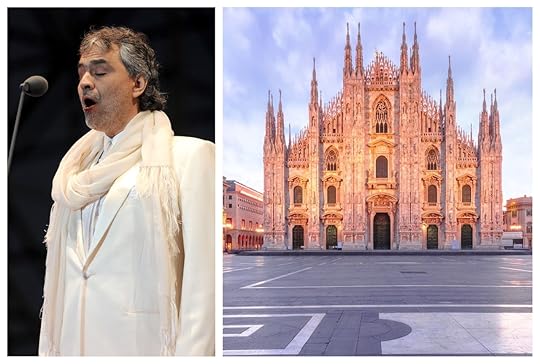
This Easter is going to look a lot different than previous years — church-goers won’t be able to attend the important celebrations and there won’t be any family gatherings. Getting in the Easter spirit will be tough this year, but Andrea Bocelli serenading you in your living room might be able to help. On Sunday, Bocelli will perform a concert called “Bocelli: Music for Hope” at the Duomo Cathedral in Milan, Italy, accompanied only by cathedral organist Emanuele Vianelli, and the whole thing will be live streamed via YouTube.
You can expect to hear classics such as “Ave Maria” and Mascagni’s “Sancta Maria,” among others.
Bocelli has stated that he won’t be accepting a fee for the concert, and hopes the performance will inspire a sense of global community.
“Thanks to music,” he said, “streamed live, bringing together millions of clasped hands everywhere in the world, we will hug this wounded earth’s pulsing heart, this wonderful international forge that is the reason for Italian pride. The generous, courageous, proactive Milan and the whole of Italy will be again, and very soon, a winning model, engine of a renaissance that we all hope for. It will be a joy to witness it, in the Duomo, during the Easter celebration which evokes the mystery of birth and rebirth.”
The performance will take place on Sunday, April 12, 2020, at 7:00 PM CET; for the US, that’ll be 1:00 PM ET and 10:00 AM PT. 

More like this: The time to sing from our balconies is upon us. These are the songs to sing.
The post Andrea Bocelli will give an Easter performance from Milan’s iconic Duomo Cathedral appeared first on Matador Network.

Eleven Madison Park prepares meals
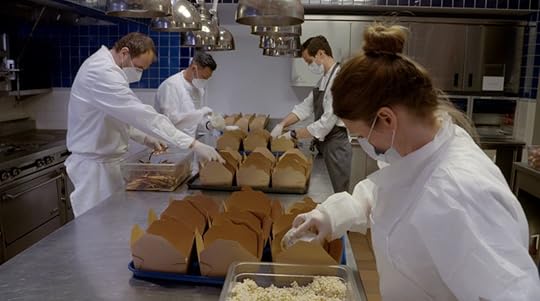
Eleven Madison Park, named the World’s Best Restaurant in 2017, is known for elevating dinner to the level of art. Then the coronavirus pandemic hit New York City, and the epitome of luxury had to be put on hold. The restaurant closed its doors, along with just about every other dining establishment in the city. But with so many resources behind it, Daniel Humm, the restaurant’s owner, decided that he couldn’t sit by and watch people go hungry during a crisis.
The Eleven Madison Park kitchen is open once again, this time as a commissary kitchen, in which the restaurant’s team prepares thousands of meals every day for front-line workers. The restaurant partnered with Rethink Food NYC, an organization which repurposes food from grocery stores and restaurants that would have been thrown away to feed the hungry, in particular for New York City-based families. So far, Rethink has served 316,335 meals, and has increased its operations during the pandemic. Up to now, the organization has received around 19,000 pounds of food from restaurants that have closed due to the pandemic.
As part of its emergency response initiative, Rethink is offering financial assistance to restaurants, especially those which need extra help to support the out-of-work staff, if the restaurant uses its kitchen to help prep meals which will be served to communities impacted by pandemic.
As Lonely Planet reported, so far, 12 chefs are back to work at the Eleven Madison Park kitchen, preparing meals not just for healthcare workers but for families who depend on food banks, many of which are currently closed. The restaurant expects to be able to prepare as many as 2,000 meals every day.
“The most important thing any of us can do is find ways to support the healthcare workers on the front lines of this battle and those struggling to survive it,” Daniel Humm said in a statement. “This program has given our team the chance to not only help people but to do what they love: cook.” 

More like this: The time to sing from our balconies is upon us. These are the songs to sing.
The post The world’s best restaurant prepares thousands of meals for front-line workers appeared first on Matador Network.

What is the Chinese cocktail bun

My dad took me grocery shopping in Seattle’s International District most weekends of my childhood. He bought stout bottles of sambal oelek, styrofoam containers of raw tofu wrapped in plastic wrap, and duck eggs at at Viet-Wah, the Vietnamese grocery store in Chinatown, then he’d duck into the cafe next door and grab himself a banh mi sandwich before we drove home. But sometimes there would be something in it for me, too, if I had behaved and traffic wasn’t too bad: a coconut bun from a bakery nearby. I remember that it had pink walls.
That particular bakery is closed now, but there are bakeries just like it scattered throughout Chinatowns all over the United States, with clear display cases packed with doughy custard-and-cream-filled treasures. The fluffy, warm bun, shaped like a miniature baguette or a closed hot dog bun, the surface of which is shined by an egg wash and sprinkled with sesame seeds, is filled with a sweet mixture I have yet to encounter in American desserts. It’s the consistency of buttery breadcrumbs, grainy or flakey in texture, and flavored with shredded coconut. Another version, aptly called the coconut cream bun, is split down the middle and filled with a strip of vanilla-flavored buttercream.
I still enjoy the occasional coconut bun, called gai mei bao (which translates literally to “rooster tail bun,” or cocktail bun), but it wasn’t until recently that I began to question where this delectable treat actually comes from. After all, there is no great baking tradition in Chinese cuisine. Steamed buns are a delicacy in China, but pastries the likes of which you might find in a French bakery? Not so much.
“The Chinese don’t really bake. Most kitchens don’t even have an oven in mainland China,” says Kian Lam Kho, James Beard Award-winning author of the cookbook Phoenix Claws and Jade Trees, and the culinary blog Red Cook. “The concept of baking is relatively modern — as in the 1800s.”
So if Chinese culinary tradition doesn’t include much in the way of bakery, and homecooks certainly don’t engage with the practice, how did this bread-based dessert become so popular in China? The answer is rooted in legend and rumor.
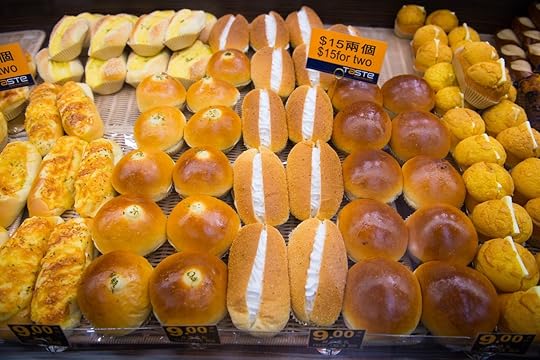
Photo: MosayMay/Shutterstock
Lam Kho has heard stories (which he emphasizes he’s not been able to independently verify) that the coconut bun might have originated in Macao, a sovereign nation of China, located off its south coast. Nicknamed the Las Vegas of Asia, Macao was a Portuguese colony for 400 years, and in that time, China absorbed many of its culinary influences. The most famous example is probably the egg tart, a Portuguese creation now ubiquitous in Chinese bakeries. It’s possible that the coconut bun was inspired by similar European baking traditions.
It’s not a coincidence that Macao is near Hong Kong, likely the birthplace of the coconut bun as we know it today. Another legend contends that the coconut bun didn’t appear in Hong Kong until the 1950s, when bakeries ground up leftover, unsold bread, combined it with coconut flakes, sugar, and butter. But I couldn’t confirm that story, and Lam Kho hadn’t heard it either. Either way, one aspect of the pastry’s history is certain: The coconut bun is “considered a Hong Kong bakery type of food,” Lam Kho says.
Though it’s nearly impossible at this point to verify either story, Lam Kho points out that the popularity of baked goods in China, like coconut buns and egg tarts, all comes down to colonialism. The British claimed Hong Kong as a colony in 1842 and controlled it until 1997, when the then-defunct empire returned Hong Kong sovereignty to China.
“The Portuguese and English brought in their own cooking, and their own baked goods,” Lam Kho adds.
The pineapple bun, a close cousin of the coconut bun, might offer a clue to the provenance of the latter. Now recognized as a part of Hong Kong’s “intangible cultural heritage,” the pineapple bun doesn’t actually contain any pineapple filling or flavor — it’s actually closer to a hot cross bun in appearance — but the criss-cross pattern on the pastry’s exterior is said to resemble the outside of a pineapple.
The pineapple bun has been around for at least 70 years, since Tai Tung Bakery in Hong Kong began making them in the 1940s. The shop’s owner, Tse Ching-yuen, told the South China Morning Post, that while a similar pastry existed in Japan at the time he opened Tai Tung Bakery, he can’t be sure of its true origin, either. It’s possible that Japan introduced the concept of the baked bun to Hong Kong; the Japanese army occupied China from 1937 to 1945. However, there’s no hard evidence that the two pastries appeared in Hong Kong bakeries at the same time.
If colonialism and conquest did give rise to the coconut bun, that might complicate its legacy as a beloved dessert. But in China that history seems mostly to have been forgotten. Hong Kong-style bakeries are popular all over China these days. Since those times of hardship and conflict, the coconut bun has become one of the country’s most well-known and popular desserts. Though its origins remain shrouded in mystery, you’re wasting time questioning the coconut bun’s history when you could just be eating one. 

More like this: The 8 most delicious street foods in Beijing and where to try them
The post The long, multi-continent journey that shaped China’s beloved coconut bun appeared first on Matador Network.

New Zealand is winning the battle

If flattening the curve were a sport, New Zealand would be Usain Bolt. Social distancing is a relatively new term in our vernacular, but it didn’t take long for one country to master it. New Zealand entered lockdown on March 25, but it fully committed to that lockdown. All nonessential businesses closed immediately, and people are pretty much confined to their homes, with the exception of exercising in their neighborhoods or grocery shopping. After just 10 days of lockdown, the number of new coronavirus cases in New Zealand has already started to drop.
On Tuesday, the number of confirmed cases in New Zealand was 54, while the number of recoveries was 65, and only one person is known to have died of COVID-19. The secret to the country’s success isn’t really a secret at all. It’s doing what the rest of the world is doing, except it’s focusing on “elimination,” rather than “containment.”
In early March, New Zealand began requesting that visitors self-isolate for 14 days, and then closed its borders entirely on March 19. The government implemented a strong, unwavering message for people to stay at home.
While the lockdown isn’t easy on business owners, many were in full support of the measure, realizing that early social distancing was crucial to eradicating the virus. Stephan Tindall, founder of the Warehouse, New Zealand’s largest retailer, said, “We were hugely worried about what was happening in Italy and Spain. If we didn’t shut down quickly enough, the pain was going to go on for a very long time. It’s inevitable that we will have to shut down anyway, so we would rather it be sharp and short.”
Due to early and effective efforts, the virus peaked at 82 cases on April 2, and has been declining ever since. Although some have called for an early end to the lockdown, citing the encouraging trend, Prime Minister Jacinda Ardern is committed to keeping the strict measures in place for a full four weeks. 

More like this: Pro tips for working from home, from the Matador staff who do it year-round
The post New Zealand’s strong response to the coronavirus crisis is already paying off appeared first on Matador Network.

April 7, 2020
What it's like to be black in Japan
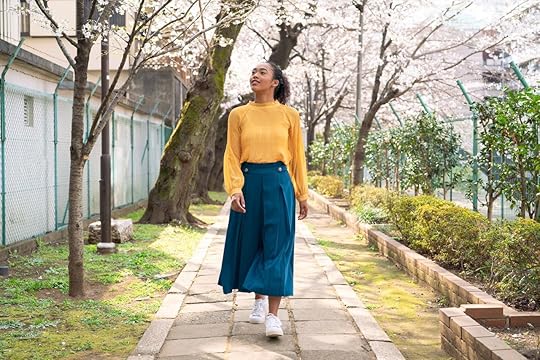
“All they do is paper here,” says Ryan DeVon, a black American graduate student at Soko University in Tokyo, Japan. “You want to change your address? New phone number? New parking sticker? Whatever it is. Everything is paper.”
We laugh together about the bureaucracy that Japan is particularly famous for. Though I am aware of it, DeVon has become intimate with it: Between navigating his visa, opening a bank account, starting a new job, and more, he’s definitely done his fair share of paperwork in Tokyo.
In a city that both depends on and so widely celebrates technology, it can seem strange that so many applications for jobs or services, financial documents, and petitions to the government require paperwork that must be filled out by hand. In a place where robots are commonly utilized for everything from room service to public safety, it’s an odd disconnect that so many Tokyoites are buried in paperwork.
Japan is a staunchly collectivist nation. Culturally, the whims of the individual are nearly always trumped by the needs of the nation, and collectively, these needs are frequently informed by traditions that span generations. When you’re talking about something as inane as paperwork, this may seem like just a funny idiosyncrasy, but with so much of Japan’s national identity rooted in tradition, it can be hard to change the status quo even when that zeitgeist becomes harmful.
Isolated under the Tokugawa shogunate for nearly 300 years leading up to the 20th century, Japan began to craft its unique mores of culture, government, and social etiquette in a largely ethnically homogenous society. Many of these ideas persist today: Countless numbers of the touchstones of their contemporary culture that even foreigners associate with Japan — like the Japanese poetry style haiku and Japanese traditional theater, kabuki, for example — were invented during this time. While this sense of cultural tradition is lauded, and even sometimes emulated, this focus on tradition is just one signal of Japan’s reluctance to change. But as the birth rate plummets and its population of retirees skyrockets, Japan’s economy is becoming increasingly dependent on immigration. Yet many foreigners arrive to find that some of what the Japanese see as storied tradition feels to them like outright racism.
“I knew that it would be difficult for me to rent an apartment as a non-citizen,” DeVon says on his recent search for an apartment in Tokyo with a local agent. “But after we called five, six different apartments, and they’re all the same. Call, call, call, and they say no foreigners allowed. Meanwhile, no one even looked at my passport or checked my credit. No one knows what type of visa I’m on nor how much money I have. And I’m like, ‘Wow.’ This might be a little bit of what our ancestors felt like, getting denied from certain spaces. Right in front of us. It’s a weird feeling.”
DeVon has been looking for a new apartment for a couple of months, a process that involved weeding out entire agencies that refused to work with foreigners.
“I’ve even asked if I could just meet some of the landlords. I figured, ‘Hey. If they’ll meet me, they’ll like me.’ But no, these agencies kept telling me that they don’t ever meet the tenants.”
“Ever?” I asked, thinking maybe I had misunderstood.
“Literally — there are some cases in which you will never meet them, even if you move in. So really, it doesn’t matter if you’re American, Chinese — if you’re from outer space. They’ve never had foreign people living in their building, and it’s not illegal, so that’s just the way it stays.”
DeVon describes one of his largest challenges upon moving to Tokyo as one that hadn’t occurred to him before he arrived: finding a barber. In a nation of people who notoriously have stick-straight hair, getting a haircut, for DeVon, was much more difficult than for your average Japanese citizen.
Only taking bookings from a Facebook page, the Shibuya barbershop Brooklyn Tokyo has a clientele almost exclusively composed of black residents and now regularly lines-up DeVon as well. Jamaican-American owner and barber Tamru Grant opened the shop to give black people in Tokyo the perfect cut, as well as that perfect black barber experience. DeVon swears the atmosphere in the shop is exactly what one would expect from someone who had made such a pledge, divulging that it “feels exactly like my barbershop in Los Angeles or Atlanta. It’s exactly right.”
These types of experiences inform his work a great deal. Along with his studies, DeVon’s visa allows him to work 28 hours a week, a privilege he utilizes by working at a brand new hostel, UNPLAN Shinjuku. His role there offers him the position to act as an unofficial black ambassador, and he enjoys the times he finds himself in the position to recommend his favorite Afro-Caribbean party, run by The Black Experience Japan, or even his own barber to black nomads who stay there. Already knowing how foreigners can sometimes be treated, he tries to make his interactions with guests as welcoming and informative as possible. But it can be taxing — between work and school, DeVon works hard to improve and contribute to the Japanese economy but sometimes feels that sentiment isn’t returned in kind.
“When they had [the 2011 Tōhoku earthquake and tsunami], all of these people from all over the world donated millions of dollars, people from so many countries came and supported Japan,” DeVon says, “so they’ll acknowledge it when they need help, support, allies. But when we come and live here, even when it’s because they need us to when it comes to making us feel accepted and comfortable just by the basic standards of their own people, it’s not even open for discussion. It just is the way it is. And so often, the ‘way it is’ is inside this anti-foreigner culture.”
Though frequently frustrating, even sometimes disheartening, DeVon still maintains that he prefers his life in Japan to what he experiences in the United States, that at least, anecdotally, he just hasn’t experienced the type of racism he finds elsewhere.
“When I interact with white people [in Tokyo]? I mean, yeah, there’s definitely some anti-blackness there,” says DeVon, “but with Japanese people, to my knowledge, I don’t seem to be treated differently than any other foreigner.”
But DeVon, a very well-traveled person, still knows the weight that whiteness can carry all over the world.
“Unfortunately, television here shows white people as saviors,” says DeVon, “so I assume that people watch these shows, they think of whiteness as more acceptable among foreigners. So white people trying to open a bank account or trying to find a place to live — it may be a bit easier for them. But so far, I see white people here experiencing the same stuff that I do, but you can’t deny that they have more social capital.”
Last October, I went to visit DeVon in Tokyo and had the exact same feeling, like a weight was lifted from my shoulders, like my fears could be diverted to more worthwhile issues. My brow uncreased and I could feel the tension I carry with me in the States ease. Something as simple as walking down the street felt intrinsically lighter, and my day to day functions felt less fraught with danger. We recall this together, laughing.
“That’s why I’m here,” DeVon tells me, “The first time I came, I was just like, ‘Wow. I gotta get back.’ It was such a lasting impression. So I applied to grad school here.”
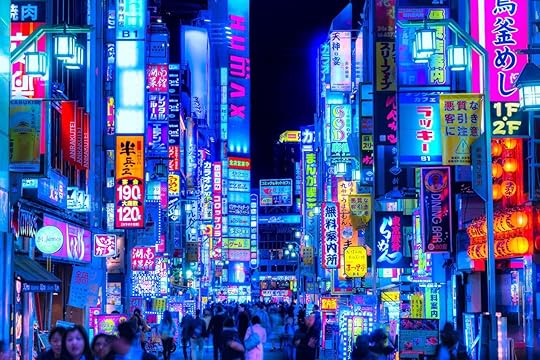
Photo: Luciano Mortula – LGM/Shutterstock
Baye McNeil, a black American journalist turned long-time Tokyo resident, wrote in a New York Times article about feeling similarly to DeVon and myself about the relative safety for black people in Japan. He said that living in Tokyo, “has given me an opportunity to view and address race issues in a sort of laboratory setting or safe space. Before going there, there was no truly safe space in the US. That burden I carried, that psychological armor, was out of necessity because, particularly as a black man in America, your very life or livelihood is in jeopardy constantly.”
Though thankful for the freedom that living in Tokyo has granted him, McNeil is possibly more critical about the responsibilities of the Japanese to accommodate immigrants and is sometimes the one to push Japanese culture in the direction of progress. Most famously, he once circulated a petition that spurned the cancelation of a racist segment of a Japanese variety show that aired on national television.
McNeil, it seems, has no intention of being complacent about anti-foreigner or anti-black sentiments and is more willing than many to analyze and critique Japanese nationalism, to find those places where it intersects with problematic conduct. In his 15 years living in Tokyo, unlike DeVon, McNeil stated that he has seen many instances where black people were targeted outright by Japanese nationals. He is one of the nation’s most outspoken figures against this behavior, though he admits in his writing that the understanding of blackness in Japan can frequently be informed by a uniquely myopic fear. “Their harangues are fueled by fear of the change in Japan that blacks represent,” wrote McNeil, “a change that is well underway.”
In 2021 (a one-year postponement due to the coronavirus), Tokyo will be hosting the Summer Olympics for the first time since 1964, and many believe this will serve as an unofficial turning point in Japanese globalization as far as their social responsibilities to foreign peoples. Already, one can see the changes in and around Tokyo: Much more English abounds, both spoken and in signage, and there have been some minor changes in policy to align Tokyo more closely with other major metropolises. While the Olympics could be responsible for prompting some of these changes, McNeil has argued that Japan is already heading to the point of no return as far as maintaining its national status quo. “Change ain’t always pretty. In fact, it’s often pretty messy. But it’s as unavoidable.” McNeil continued, “Japan is now a multicultural, multiracial country, and will become increasingly so in the years to come.”
But the difference between DeVon and McNeil’s experiences may be time. While McNeil has spent the last 15 years living in Tokyo, DeVon is just finishing his first. Their individual understanding of what it means to live in Japan as a black person is bound to differ. Time may have given McNeil the insight to interpret the same situations differently.
When I was in Japan, one night I went to a basement bar with a couple of old friends from Melbourne. Within an hour we had made friends of all the bartenders and most of the other patrons in the bar. We danced and laughed together, translating back and forth between English and Japanese on our phones.
At one point the bartender told me he had a surprise, just for me. He went over to the DJ and told him something in Japanese, and for the next hour, we exclusively listened to ‘90s American hip-hop.
I failed to tell him that I, having grown up in Seattle, was much more fond of grunge.
I didn’t feel like this experience was malicious. In fact, the music was great. But for a moment I felt what McNeil and DeVon must spend a lot of time grappling with: that feeling of being othered, of being reduced to, as the Japanese would say, a kokujin — just another black person, devoid of a personal narrative.
I asked him if it was worth it — if living in Japan was worth dealing with the microaggressions, worth constantly being in spaces where what it means to be black simply isn’t understood.
“Unfortunately, I’ve never been anywhere where I wasn’t discriminated against at all,” DeVon answers, “but here, at least I don’t fear for my safety. I’m happy here. And I’m definitely happier here than I was in the States.” 

More like this: These are the born-frees welcoming you to Johannesburg
The post What it’s like to be black in Japan appeared first on Matador Network.

Coolest-looking museums in the world
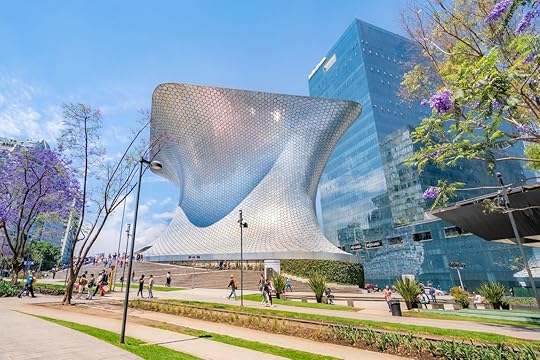
Museums contain a wealth of knowledge, treasures, and experiences that cannot be had anywhere else. From Egyptian antiquities to interactive digital art to optical illusions, it would be easier to list what you can’t find in a museum. But not all the visual and immersive fun has to be had within a museum’s walls. With all kinds of sizes and shapes, like a lotus flower, flying saucer, and whale, there are many museums that are just as cool and beautiful on the outside as they are on the inside.
1. National Museum of Qatar — Doha, Qatar

Photo: HasanZaidi/Shutterstock
The National Museum of Qatar is an ode to Qatari history, looking to its past, present, and future. Its 570,000 square feet are divided into three sections: “Beginnings,” “Life in Qatar,” and “The Modern History of Qatar.” For its design, architect Jean Nouvel drew inspiration from the desert rose, a cluster of crystals shaped like a rose typically found in arid climates. According to Nouvel, “I wanted to create a structure that evoked the local geography and, in keeping with the tradition of the place, to ensure that it offers maximum protection from the sun.”
Where: Museum Park Street, Doha, Qatar
2. Astronomic Observatory Museum — Quito, Ecuador
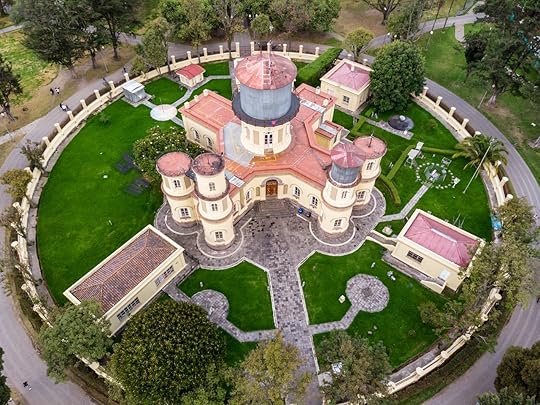
Photo: Ecuadorpostales/Shutterstock
Located in Alameda Park, Quito’s oldest park, the Astronomic Observatory Museum was once a working observatory. It was founded in 1873 by then-president Dr. Gabriel Garcia Moreno, making it the oldest observatory in South America. While it now serves as a museum, it still contains many of the original astronomical instruments, as well as newer additions. The Victorian-style building was designed by Father Juan Batista Menten, a German scientist and astronomer.
Where: Av Gran Colombia y 10 de Agosto (dentro del Parque de la Alameda), Quito 170136, Ecuador
3. ArtScience Museum — Singapore
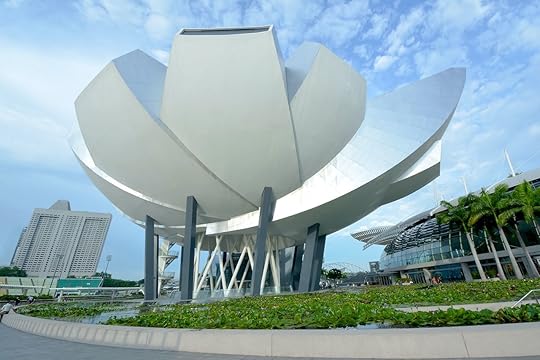
Photo: SamanWeeratunga/Shutterstock
Art and science have been two subjects long thought to be separate, but not so at Singapore’s ArtScience Museum, where the two meet for a wonderfully collaborative experience. Its rotating exhibits have covered topics such as the history of animation in Disney films, what it means to be human, and wildlife conservation. Designed by Moshe Safdie, it opened in 2011 as part of the Marina Bay Sands resort. The 50,000-square-foot space is in the shape of a lotus flower, with 10 finger-like petals that each have skylights that provide natural light within. Even the base at its center serves a purpose, funneling rainwater to a pool in the atrium to then be recycled for building use.
Where: 6 Bayfront Avenue, Singapore 018974
4. Hanoi Museum — Hanoi, Vietnam
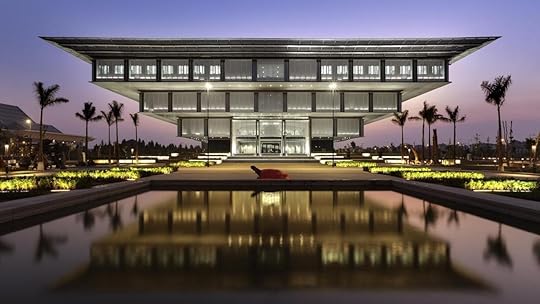
Photo: Marcus Bredt via GMP
Opened in 2010 as part of Hanoi’s 1,000th anniversary, the Hanoi Museum is dedicated to its namesake’s history, with numerous artifacts on display. It was designed by architectural company GMP as a 32,000-square-foot inverted pyramid that’s both energy-efficient and architecturally innovative — each level of the building is shaded by the next, protecting the building, as well as the exhibits, from unwanted heat (and thus lowering air conditioning levels). In front is a large pool, which provides a reflection of the museum’s unique design. Additionally, the museum is part of an artificial park with lots of outdoor space and traditional Vietnamese villages.
Where: Phạm Hùng, Mễ Trì, Nam Từ Liêm, Hà Nội 100000, Vietnam
5. Niterói Contemporary Art Museum — Niterói, Brazil
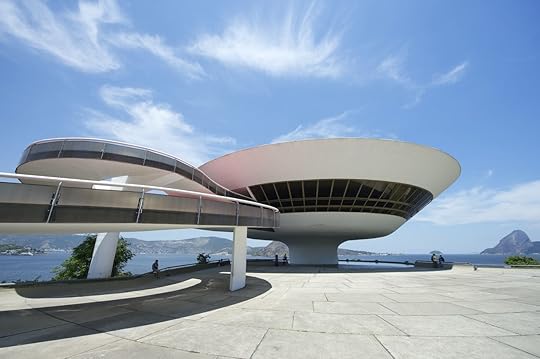
Photo: lazyllama/Shutterstock
One might expect extraterrestrials to pop out of this UFO-shaped structure, but all there is to find inside is modern art donated by collector João Sattamini who, before the museum was built, wanted a place to donate his collection. The Niterói Contemporary Art Museum was designed by famed modern architect Oscar Niemeyer to be built upon the cliffs of Guanabara Bay, which offers panoramic views of the iconic natural landscape of the region.
The circular, saucer-like shape was purposefully done; Niemeyer was known to go against the norm of straight lines and right angles when it came to structure, and he believed in freedom from conformity in all aspects of life. His use of concrete for the building materials is due to his quest for “plastic freedom.” Surrounded by a water basin, Niemeyer wanted the museum’s shape to be like “a line that rises from the ground and, without interruption, [growing and unfolding].”
Where: Mirante da Boa Viagem, s/nº – Boa Viagem, Niterói – RJ, 24210-390, Brazil
6. Solomon R. Guggenheim Museum — New York, USA

Photo: Tinnaporn Sathapornnanont/Shutterstock
New York’s Guggenheim has several designations under its belt: It’s a UNESCO World Heritage site, New York City Landmark, US National Historic Landmark, and is on the US National Register of Historic Places. While Frank Lloyd Wright was originally commissioned in 1943 to design it, the museum did not open its doors until October 1959, several months after his death. In a city full of sharp angles and lines, the modernist round building was a refreshing addition and is now one of its most iconic sites. Approximately 50,000 square feet, inside the Guggenheim is an expansive collection of modern and contemporary art.
Where: 1071 5th Avenue, New York, NY 10128
7. Soumaya Museum — Mexico City, Mexico
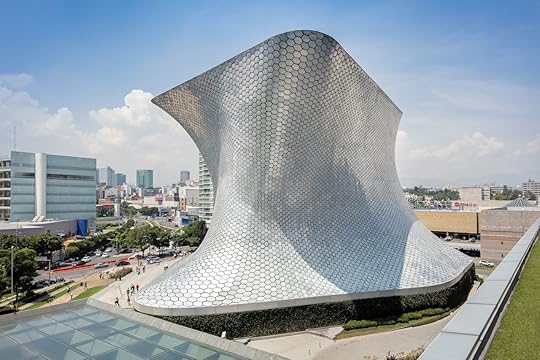
Photo: BondRocketImages/Shutterstock
The Soumaya Museum is a unique addition to Mexico City’s skyline, with a shiny and curved appearance. It was entirely funded by Carlos Slim, one of the richest men in the world, and designed by his son-in-law Fernando Romero’s architecture studio FR-EE. Named after Slim’s wife, inside the free, 170,000-square-foot building is Slim’s art collection, as well as other works totaling well over 66,000 Latin American and European pieces.
Where: Blvd. Miguel de Cervantes Saavedra, Granada, Miguel Hidalgo, 11529 Ciudad de México, CDMX, Mexico
8. Príncipe Felipe Science Museum — Valencia, Spain

Photo: Ciudad de las Artes y las Ciencias/Facebook
Located in Valencia is a sprawling modern-art complex, called the City of Arts and Sciences, dedicated to science, technology, nature, and art. The complex itself comprises six different structures, is surrounded by multiple pools of water, and was designed by Santiago Calatrava and Félix Candela. While all of the spaces are stunning in their own right, the more architecturally interesting is the Príncipe Felipe Science Museum, specifically planned by Calatrava. It spans over 279,000 square feet, and its overall look is reminiscent of a whale skeleton. With a motto of “Forbidden not to touch, not to feel, not to think,” the museum prides itself on being interactive and stimulating for all ages and has rotating exhibitions and activities on topics such as science, technology, and nature.
Where: Ciudad de las Artes y de las Ciencias, Av. del Professor López Piñero, 7, 46013 Valencia, Spain
9. National Museum of Australia — Canberra, Australia
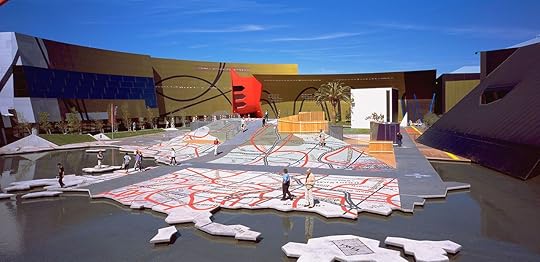
Photo: National Museum of Australia
Paying homage to the nation’s history and culture, the National Museum of Australia was the work of architects Ashton Raggatt McDougall and Robert Peck von Hartel Trthowan, both of whom won the international design competition held to see who would receive the honor of designing the museum. The entirety of the museum’s space encompasses 27 acres, though the building itself is 71,000 square feet. The building is not symmetrical and instead has several differently sized spaces that fit together. It forms a semicircle around the Garden of Australian Dreams in the middle, a piece of concrete depicting part of central Australia on top of a pool of water — symbolic of the country’s actual position geographically.
Another standout feature of the museum is the giant loop sculpture at its entrance, the Uluru line, which curves upward nearly 100 feet high and then around the surrounding area until it spreads out into a walkway, ending in a ramp that is pointing toward Uluru itself.
Where: Lawson Cres, Acton ACT 2601, Australia
10. Teshima Art Museum — Teshima, Japan
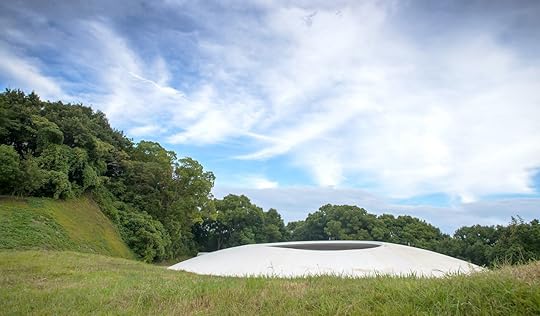
Photo: YingHui Liu/Shutterstock
There is uniqueness, beauty, and power in the simplicity of the Teshima Art Museum. Located on one of Japan’s art islands, a group of rural islands filled with contemporary art, this museum was designed by architect Ryue Nishizawa and artist Rei Naito to resemble a water droplet at the exact moment it lands on something. As such, it’s made up of a concrete shell, independent of any pillars, with just two openings. The ceiling’s oval opening allows for the natural elements to flow in, dramatically changing the experience depending on what the weather is like on any given day.
The museum houses just a single work, titled “Matrix,” in which water regularly seeps out onto the concrete flooring. “Matrix” is meant to work in tandem with the openings, to mirror the passing seasons and time. Even just viewing it from the outside provides a powerful image that serves as a reminder that we are stewards of this planet, and our relationship with the environment should be a harmonious one.
Where: 607 Karato, Teshima, Tonosho-cho, Shozu-gun, Kagawa 7614662 Japan 

More like this: How to crush the British Museum in one day
The post 10 museums that are just as cool on the outside as they are on the inside appeared first on Matador Network.

European countries may end lockdown
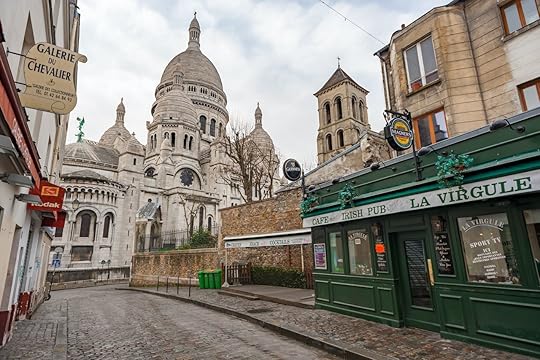
While the US is still embroiled in the worst of the coronavirus pandemic, bracing for peak deaths this week and next, Europe is finally seeing a light at the end of the tunnel. Many European nations have been deeply entrenched in lockdown measures for weeks, and those won’t be lifted in their entirety right away, but there are signs that some countries are eyeing dates for a relative return to normalcy.
According to The Guardian, on Monday, Austria became the first EU country to announce plans to lift restrictions, targeting April 14 for smaller shops to reopen. If all goes to plan, larger shops would reopen on May 1, with hotels, restaurants, and other services soon to follow. Similarly, Denmark announced a plan to reopen nurseries and primary schools on April 15, assuming the number of coronavirus deaths remains relatively steady.
Germany has reported four consecutive days with a drop in the number of COVID-19 cases, and while no official announcement has been made, a leaked interior ministry document hints that officials are planning a gradual end to the country’s lockdown starting on April 19. This doesn’t, however, mean that life will go back to normal. Upon lifting the lockdown, Germany would require residents to wear masks in public, place limits on public gatherings, and only open schools on a regional basis.
Even Spain, which recorded the second-highest death toll in the world, is starting to think of post-lockdown life after four consecutive days off decreasing COVID-19 deaths.
The worst is still upon us in many countries around the world, particularly the US and Japan, but Europe’s flattening of the curve is an encouraging sign of what’s to come if everyone obeys social distancing measures. 

More like this: 10 films that show the beauty of Europe
The post Several European countries eyeing tentative return to normalcy appeared first on Matador Network.

LGBTQ guide to London
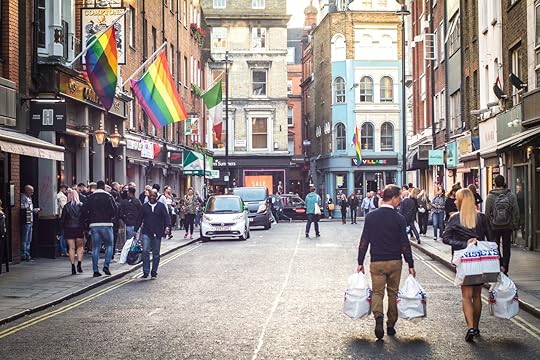
The UK has a dark history of oppressing its gay population, but that’s never stopped queer people from building vibrant underground communities. Those communities developed into resistance movements and made possible the abiding legal freedoms that are guaranteed to gay Brits today. At the center of this history is the city of London, which continues to be the heartbeat of queer life in the UK. Take a stroll through Soho, just one of London’s many gay districts, and it’ll be quite clear that this city has much to offer LGBTQ travelers. From riotous drag shows at upscale cocktail bars to gay history collections at some of its premier museums, LGBTQ culture is never more than a tube ride away.
LGBTQ history
If you’re reading this article, you’ve probably heard of slang words like butch, camp, and queen. But, little known to most, these terms come from the queer underground world of pre-1970s London. Back when Great Britain was a far less tolerant place, LGBTQ people used a secret language called Polari to communicate with one another. The language was a mixture of words from cockney rhyming slang, Romani, and Italian, and was popularized by drag queens.
Since homosexual acts were a crime, Polari enabled gay men to talk safely in mixed company. Like Ye Olde Grindr, it was also used to identify oneself as queer and available. The language was campy and playful: Bona to vada your dolly old eek, a common Polari greeting, meant “Nice to see your pretty face.” Dish meant “ass,” and bona dish meant “nice ass.”
Polari wasn’t just for gay men. It was also spoken by lesbians and transsexuals, and it was actively used until 1967 — the year homosexuality was decriminalized in the UK. As it was no longer necessary to hide, many gays and lesbians began speaking publicly in plain English about their private lives. Today Polari is a dead language, but elements of it continue to survive in drag culture and have even trickled into the mainstream. Tune into Ru Paul’s Drag Race UK or visit one of the city’s gay cabarets, and you’ll witness the remnants of old London’s underground LGBTQ legacy.
Neighborhoods and nightlife
Soho
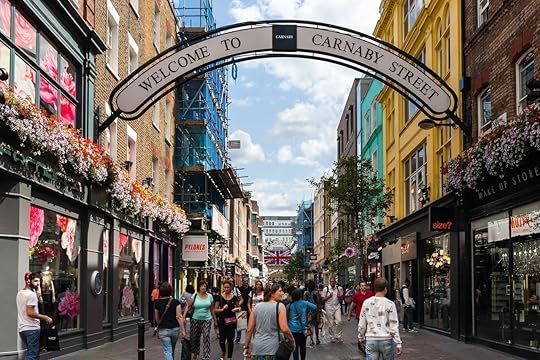
Photo: Ale Argentieri/Shutterstock
Soho is the front-and-center premier gayborhood of London. It’s centrally located and surrounded by many of the city’s major tourist sites, including the West End theater district. Soho is the spot for fancy cocktail bars, drag shows, “after works” and more. With so much nightlife concentrated in one small area, it can’t be missed.
FREEDOM
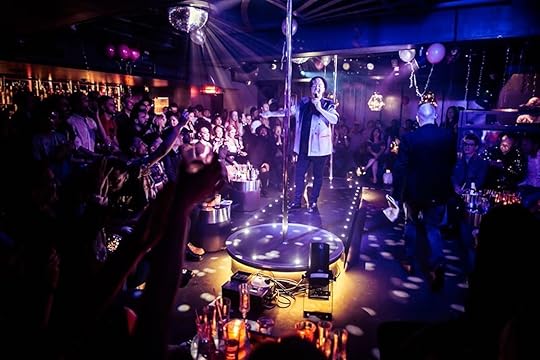
Photo: Freedom Bar Soho/Facebook
There’s no grunge at FREEDOM. This upscale gay bar looks like a Restoration Hardware showroom. Plush couches, modern light fixtures, and real floral arrangements dot the ground level. The ambiance is complemented by a signature cocktail menu that rivals London’s fanciest hideaways. If high society is not your thing, FREEDOM’s lower level is outfitted like a cabaret and hosts a drag competition show on Monday nights. Similar to Ru Paul’s Drag Race, judges critique the queens after they finish performing. The show is rip-roaring hilarious and showcases some of the best drag talent that London has to offer.
Where: 60-66 Wardour Street
Hours: Daily from 4:00 PM-3:00 AM
Comptons of Soho
Like your tacky great aunt’s living room, Comptons is decked out with antiquated chandeliers and rickety furniture. Its creaky wood floors and random slot machines also contribute to that aesthetic. Outdated it may be, but Comptons is a neighborhood staple with a convivial atmosphere. It’s also the perfect starting point for those wanting to make the rounds as it’s conveniently located on the same block as three other bars.
Where: 51-53 Old Compton Street
Hours: Daily from noon-11:30 PM
Village
Village is a modern gay club with a mix of chill and party vibes. The ground level is split into two lounge-style rooms, each with their own bar. The cellar is a foggy, neon-lit dance club where electronic music thumps all night. Also located on Compton Street and within steps of several other bars, Village is a solid spot to add to a Soho bar crawl.
Where: 81 Wardour Street
Hours: Daily from 4:00 PM-2:00 AM (3:00 AM on weekends)
Friendly Society
If you’ve ever been to Friendly Society then you can imagine what Alice must have felt like when she tumbled down the rabbit hole into Wonderland. This bar is like taking an acid trip to a bizarrely magical place with garden gnomes and naked Barbie dolls at every turn. Come for the weird ambiance, but stay for the cocktails. Friendly Society has one of the best-rated drink menus in Soho, and its lounge setup is conducive for group conversation.
Where: 79 Wardour Street
Hours: Daily from 4:00 PM-11:30 PM
She Soho

Photo: She Soho/Facebook
She is a bar for women. And being London’s only dedicated lesbian venue, it’s pretty militant about that (though it is trans-inclusive). Once inside, however, She is known for chill vibes and good music. DJs spin every weekend, and during the week there are kitschy themed event nights. The bar’s swanky, futuristic interior gives the feeling that you’re on a lesbian space ship. But remember, men are not welcome aboard.
Where: 23a Old Compton Street
Hours: Daily from 4:00-11:30 PM (3:00 AM on Saturdays)
G-A-Y
Just like the name, what you see is what you get: a classic, no-frills gay bar. Everyone goes to G-A-Y. If you only had one hour to spend in Soho, you’d probably end up here. The bar trends younger and is typically a 50/50 split of tourists and locals. There’s a terrace on the second level that opens when tank top weather rolls around. And it helps that the drinks are cheap, even after happy hour ends.
Where: 30 Old Compton Street
Hours: Daily from noon-12:00 AM
Vauxhall
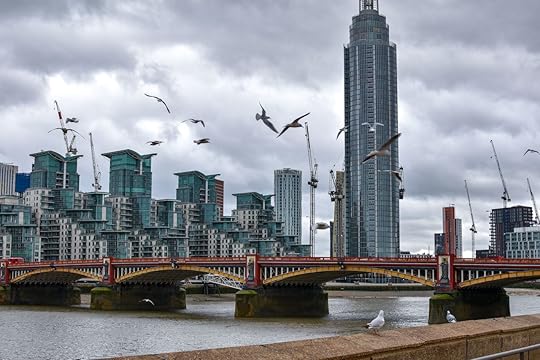
Photo: Dani Berszt/Shutterstock
Vauxhall is Soho’s badass punk rocker twin that lives on the south side of the Thames. It’s London’s original queer neighborhood, going back to when homosexuality was illegal in the UK. LGBTQ people pejoratively referred to as “mollies” at that time defied the law by congregating in secret “molly houses” in this hood. That illicit spirit of defiance lives on in Vauxhall’s institutions today, and it’s where you go for LGBTQ history and/or wild nights at unorthodox bars.
Royal Vauxhall Tavern
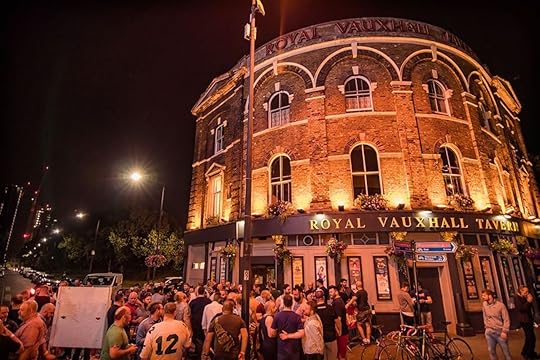
Photo: The Royal Vauxhall Tavern/Facebook
This iconic cabaret hall is nothing short of legendary. Among its many famous visitors was Freddie Mercury, who allegedly once snuck Princess Diana inside while she was disguised as a man. That was in the ‘80s, which is like last week as far as this institution is concerned. Dating back to 1860, Royal Vauxhall Tavern is London’s oldest standing LGBTQ venue, and it’s still showcasing some of the most entertaining cabaret in the city. Thanks to its new protected status as an Asset of Community Value, it will continue to do so into the foreseeable future.
Where: 372 Kennington Lane
Hours: Daily, opening hours vary
Eagle London
Like its NYC and San Fran counterparts, Eagle London is a fetish bar for guys who like leather. Infamous for being a very cruisey spot, Eagle’s attempted to clean up its image in recent years. The newly renovated bar has a beer garden and hosts weekly parties with cult followings, like Horse Meat Disco every Sunday. Despite this, Eagle will always be synonymous with cruising, so be aware that you might encounter some hanky panky.
Where: 349 Kennington Lane
Hours: Tues-Thurs from 8:00 PM-2:00 AM, Fri-Sun from 8:00 PM-4:00 AM, closed Mondays
The Cock Tavern
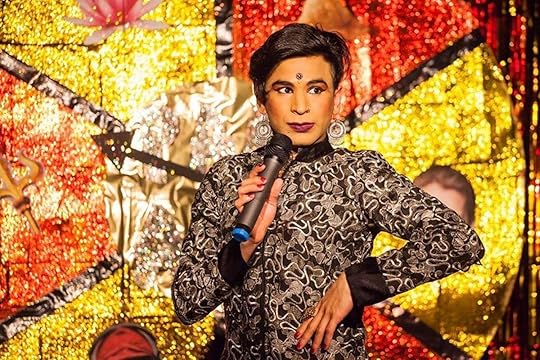
Photo: The Cock Tavern London/Facebook
A self-described “Georgian tiki bar,” The Cock Tavern serves up delicious signature cocktails in a chic setting. Georgian because it’s originally a pub from the Georgian architectural period of London, and tiki bar because the owners attempted to convert it into one in 2003. Now it’s an eclectic combination of both that somehow works. Located on Kennington Road in a slightly more discreet setting than the other Vauxhall bars, it has a relaxed vibe where you can sip a rhubarb gin spritz in a plush leather loveseat.
Where: 340 Kennington Road, Oval
Hours: Wednesday-Sunday, opening hours vary
East End
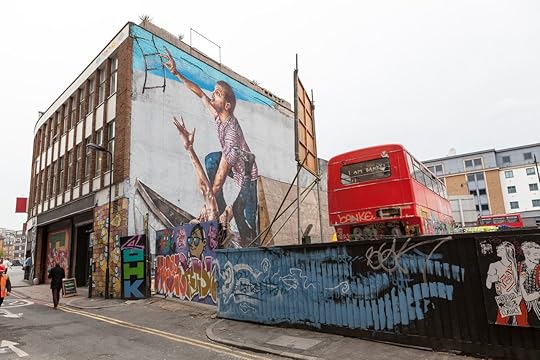
Photo: AC Manley/Shutterstock
The boundaries of the Greater London area keep pushing East as neighborhoods gentrify and prices rise. Birthplace of the cockney accent, the East End is now a mix of hipster havens, immigrant communities, and old school Brits. With a growing number of LGBTQ spaces, queer Londoners are the most recent addition to this cocktail of cultures.
Dalston Superstore
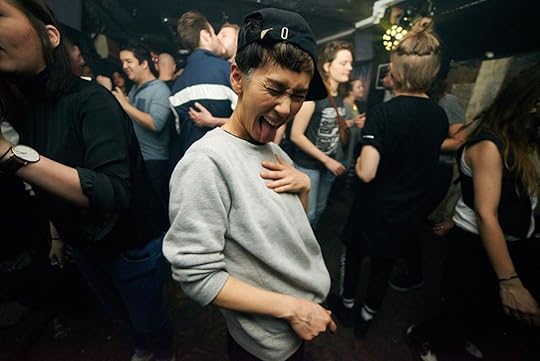
Photo: Dalston Superstore/Facebook
Take the tube out to Zone 2 for queer brunch in the East End neighborhood of Hackney. Dalston Superstore’s rainbow storefront is a brand new LGBTQ outpost on a hectic street brimming with vendors and discount stores. The inside feels like a gay American diner, if such a thing exists. An average weekday scene is hungover club kids sipping espressos, and boho freelancers nose deep in their laptops. On Saturday and Sunday, boozy drag brunch is the vibe. Diner classics with an elegant twist are on the menu — think garnished eggs benedict and organic avocado toast.
Where: 117 Kingsland High Street
Hours: Daily, opening hours vary
The Queen Adelaide
Regal in name only, The Queen Adelaide is a strip club turned gay pub in Cambridge Heath. It’s a straight-up dive that attracts artsy types and gays looking for a good deal — a pint of beer is only $5 and change.
Where: 483 Hackney Road
Hours: Daily, opening hours vary
Events
London Pride
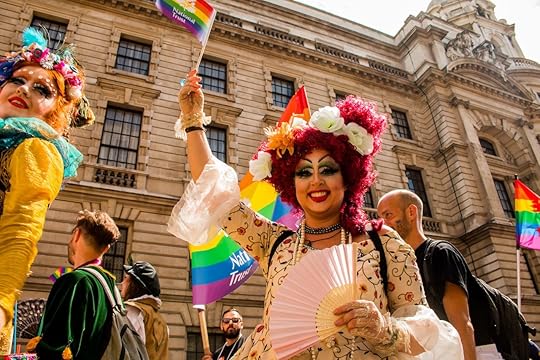
Photo: London LGBT Pride/Facebook
London pulls out all the stops for pride month. After all, it’s the biggest and most diverse one in the UK. London Pride is a month-long event consisting of parties and activities and culminates with a star-studded parade through Soho. With something happening almost every day, there will be no shortage of opportunities for you to wave your freak flag. Consult the official pride website for a calendar of activities.
When: June
UK Black Pride
This is major. UK Black Pride is the largest celebration for LGBTQ people of color in all of Europe, and it takes place in London. As much as it’s a party, Black Pride also seeks to promote and advocate for black and POC communities in the UK. It’s a truly grassroots event that encourages participants to volunteer, perform, or sell their products at the pride marketplace.
When: June
Winter Pride
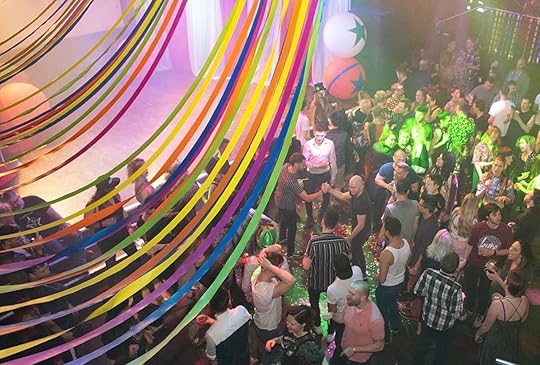
Photo: Winter Pride UK/Facebook
Channel your inner Elsa at UK Winter Pride, an event that’s taken place in London for the past five years. Every January, one of London’s mega-clubs is transformed into a super gay disco winter ball. With performances happening throughout the night, the lineup includes some of the city’s most notable drag queens and DJs. Consult the Winter Pride website for details.
When: January
London LGBTIQ+ Film Festival
This annual film fest takes place at the British Film Institute Southbank Cinema. The screenings highlight some of Britain’s best independent queer filmmakers. The lineups feature films that deal with aspects of the LGBTQ experience ranging from substance abuse to steamy lesbian romance and historic queer stories of protest and resistance. Tickets can be purchased in advance online or at the box office.
When: March
Museums and culture
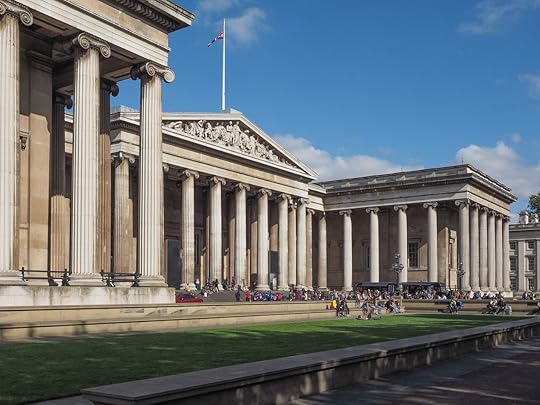
Photo: Claudio Divizia/Shutterstock
British Museum: Explore LGBT Histories
The British Museum has created an LGBTQ Histories Trail that charts queer desire, love, and identity across the entire collection. This program helps LGBTQ people connect with queer history, going back to antiquity and earlier. Visitors can view, for example, an ancient Greek vase depicting the famous lesbian poet, Sappho, and better understand her impact on the classical world. History buffs, both gay and straight, will be impressed. Entry to the British Museum is free.
Where: Great Russell St, Bloomsbury
Museum of London: Hidden Pride
The Museum of London has a vast collection of archives documenting the city’s LGBTQ past. It also hosts queer cultural events throughout the year, especially during pride month. The museum intends to offer free pride tours highlighting the most significant moments in London’s queer history this year, though that may be put on hold for 2020 due to the coronavirus.
Where: 150 London Wall
London Gay Men’s Chorus

Photo: London Gay Men’s Chorus/Facebook
Britain’s biggest (and gayest) boy band performs several times per year around London. With three upcoming events for pride month, you can see for yourself why the London Gay Men’s Chorus has a world-famous reputation. Tickets start at $60.
Day trips
Brighton
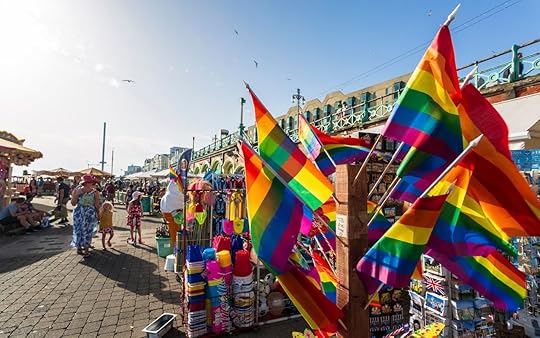
Photo: Toms Auzins/Shutterstock
No London LGBTQ guide is complete without at least mentioning Brighton. Situated on the sandy shores of the English Channel, Brighton is to London as Fire Island is to New York: It’s where the gays go when the sun comes out. St. James Street in the Kemp Town neighborhood is where you’ll find most of the action. LGBTQ venues blanket this area, but virtually every place around here is gay-friendly at the very least. Less than one hour from London by train, Brighton is an easy day trip or weekend getaway. Read more on how to spend your time there in our ultimate LGBTQ guide to Brighton. 

More like this: The ultimate rainy day tour of London’s museums
The post The ultimate LGBTQ guide to London appeared first on Matador Network.

Fine dining in South Africa
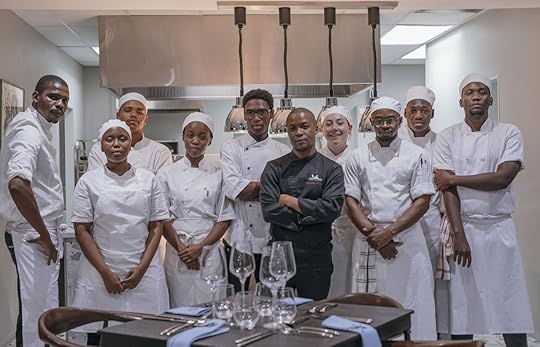
For most of history the term fine dining was synonymous with European, and in particular French, cuisine. It’s a term that connotes exclusivity, reserved only for the ultra-wealthy members of high society. At so-called fine-dining establishments, prestige ingredients like foie gras and caviar appear frequently on menus — and their status is usually solidified by a coveted Michelin-star rating.
When the Michelin Guide first introduced its star rating in 1936, it created a new standard for fine-dining restaurants. Though Michelin is now more inclusive, publishing guides for Brazil and Singapore, its focus is still largely on Europe. However, the Michelin Guide has yet to make an appearance in South Africa.
In fact, Michelin ignores Africa altogether, but this oversight has nothing to do with the quality of chefs and restaurants. South Africa is home to some of the most highly respected and awarded chefs and restaurants in the world and has an impressive fine-dining scene.
A long and tragic history of colonialism throughout Africa might explain why many of South Africa’s fine-dining establishments have a French influence. However, this trend is starting to shift. An exciting new generation of chefs aims to celebrate African flavours, cultures, and ingredients in their dishes and showcase that African cuisine deserves a space in the fine dining scene.
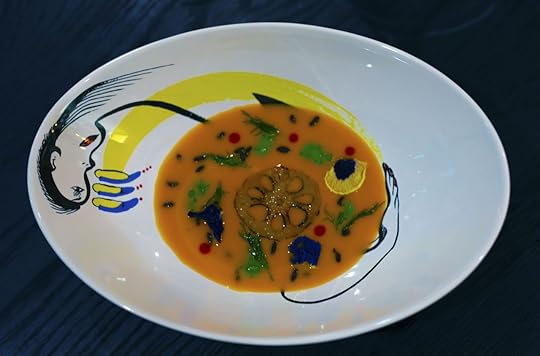
Photo: Les Creatifs
“The fine-dining scene in South Africa is looking good,” says Wandile Mabaso, the head chef and owner of Les Créatifs. “Some chefs are producing really outstanding dishes that compare with top restaurants in Europe. However, I do feel that most of us lack authenticity and try to replicate cooking styles from overseas. The problem is that there are not many quality kitchens that can provide young chefs with exceptional training skills. That is why some of us decided to train abroad.”
Chef Mabaso began cooking at the age of 10 because his single mother, who worked late nights, left him and his brother to fend for themselves at the dinner table. He went on to train under legendary French chef Alain Ducasse.
Chef Mabaso shows great admiration for his former mentor. “He is probably the best chef of our time,” Mabaso says. “Not only is [Ducasse] a successful chef, he’s also a successful entrepreneur. This influenced me to apply entrepreneurial skills into my chef career.”
Dishes and ingredients that define (and redefine) South African cuisine
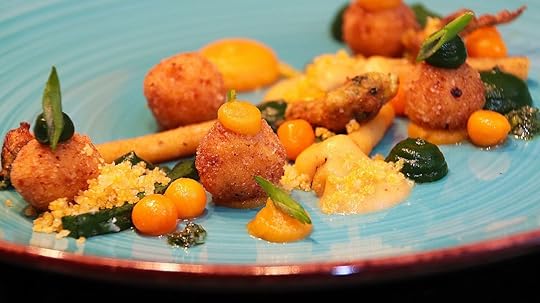
Photo: Siyabulela Kobo
When it came time to open his own restaurant, Mabao decided he wanted his menu to be experimental and playful, and most of all, he wanted it to be rooted not in the European cuisine that defines fine dining all over the world but instead traditional South African dishes.
“I’ve always flirted with the idea of redefining South African cuisine,” he explains. “At my restaurant we experimented with using samp instead of arborio rice for a risotto and fermenting our own sorghum and turning it into an ice cream.”
A panache for serving local ingredients with a twist is shared by one of his peers, Siyabulela Kobo, head chef at Restaurant Kobo Cuisine. Chef Kobo originally wanted to be a mechanical engineer but, due to a lack of funds required to study, he worked as a waiter to make some cash. Subtle sounds and sensations from the kitchen soon caught his attention, though: the sound of a knife chopping vegetables, the bubble of oil cooking chips in the fryer, the sizzle of fire grilling a steak. He volunteered as a chef trainee, and his career as a chef began. Before he opened Kobo Cuisine, he served as head chef at the InterContinental Hotel.
“I use locust dry rub for grilling birds, mopani worms as a crust to venison, ash made from potato skins that are cooked in open wood flames,” he says. “South African cuisine is pure flavor. We do not use a lot of spices, and we make the original flavors of the ingredient stand out. Our flavors come from our cooking methods and we use a lot of wood, which brings smoky flavors.”
Chef Kobo counts umvubo (maize meal, water and sour milk), umqa (pumpkin and grinding corn), isigwamba (maize meal and spinach), bobotie (Cape Malay curry), umngqusho (samp and beans), milk tart and tshotlo (pounded beef) among his favorite South African dishes.
However, Chef Mabaso cautions that South African food should be recognized for more than its diverse ingredients, which don’t tell the whole story of how the country’s cuisine came to be.
“We should never define any cuisine based on ingredients,” said Chef Mabaso. “There are many ingredients that we believe are unique to us but are actually consumed everywhere else in the world. What defines our cuisine is culture and history.” However, he notes that “there are special rare ingredients like samp [boiled maize kernels] that we can call our own.”
The future of South African fine dining
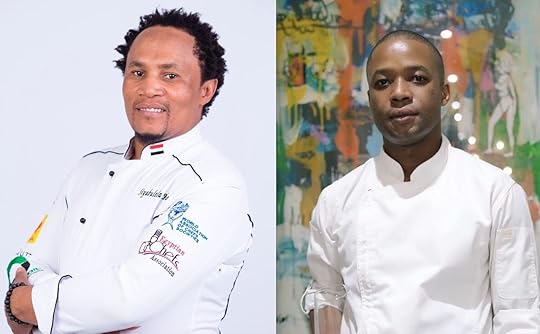
Photo: Siyabulela Kobo (left), Wandile Mabaso (right)
At Les Créatifs, dining is a completely immersive experience.
“You can expect to be transported to a place you would never have imagined,” Mabaso says. “It’s an all round artistic and multi-sensory experience. I believe the food, decoration, art, and cocktails are all unique from any restaurant in South Africa”.
Meanwhile, at Restaurant Kobo Cuisine, expect to taste a cuisine that is purely South African.
“Restaurant Kobo Cuisine prides itself on progressive indigenous cuisine,” says Kobo. “We cook seasonal and fresh; we let the ingredients speak for themselves. Our signature dish is called umvubo. This dish goes back to herding cattles in the field. We would fish but if we got no fish, we would milk the cows and allow the milk to curdle up or ferment and we would cook corn and eat it with sour milk [amasi]. The same amasi at home would be mixed with umphokoqo [crumbled pap, a type of porridge made from ground maize]”.
For these ambitious chefs, the sky is the limit. Chef Mabaso never shies away from a challenge and hopes his restaurant will continue to evolve.
“My main goal is to keep learning, growing, and challenging myself as a chef,” he says. “I want to transform the [restaurant] industry in South Africa, open up more restaurants, and grow my business.”
Chef Kobo is eager to see African cuisine gain the wider recognition it deserves — not just within Johannesburg or even South Africa but on the worldwide stage — and hopes to someday earn “accolades in the global culinary world.”
“There are many chefs I think are doing great things in the continent,” adds Chef Mabasco. “I believe that our industry in Africa is evolving, and very soon we will see African chefs become icons.” 

More like this: Bunny chow and Cape Malay curry highlight South Africa’s rich cultural heritage
The post These South African chefs are changing the global fine-dining landscape appeared first on Matador Network.

Cooking a meal from every country
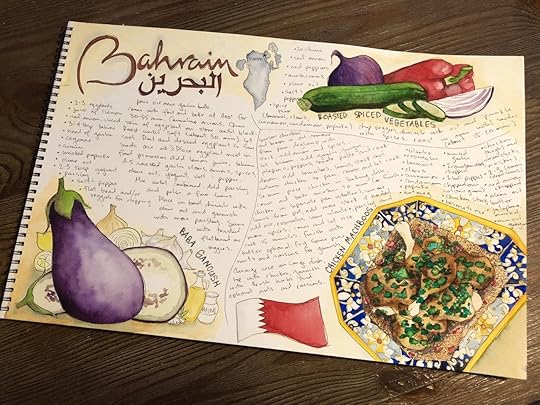
Dish by dish, one family is exploring the world without leaving their home. Brianna Deveraux-Allen has been cooking up connections, using her kitchen to transport her loved ones to countries and cultures around the globe. Her mission: create a well-researched meal from a new country every week. Then serve it with facts, fun, and finish it off with an artsy sketchbook entry. And keep doing it, 204 times.
What possesses someone to make an authentic meal from every country, in alphabetical order? Deveraux-Allen laughingly admits the project started with fanciful visions of time spent with her young son, and a blindness to the energy it would require. What has kept her going has a more complicated answer. The simple ideas that originally inspired her have transformed into a deeper drive of togetherness. First, her family bonded, then the world responded. Now, with thousands of ideas for dishes from friends and strangers, she presses on, halfway through the five-year adventure.
It started with a “whimsical idea”
Deveraux-Allen’s cooking confidence was at an all-time high when this project began. This California-based artist and dance instructor was having fun with a meal kit delivery service, playing with new ingredients and techniques. While cooking, she spotted the world map that she hung on the wall for her two-year-old son. Then the thought hit her. “My little whimsical idea. Oh, we’ll cook and learn together!”
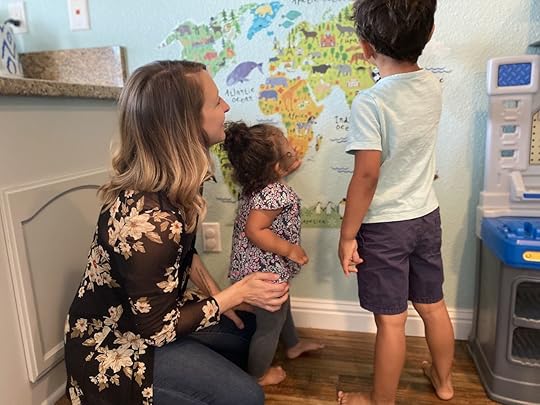
Photo: Brianna Deveraux-Allen
“I had this fantasy about how fun and educational it would be. Mostly I wanted to use some new ingredients, learn some new techniques, talk for a few minutes each week with my son about other countries, and maybe gain some cooking status. But it’s become so much more than that.”
She started out by making these adventurous meals for her husband and son. She got inspiration from social media hubs and fellow food bloggers. Some countries have an abundance of food coverage, while others, like Chad, required more digging. But she fell into a rhythm and found herself creating a meal and sketchbook entry every week.
Unexpected complications
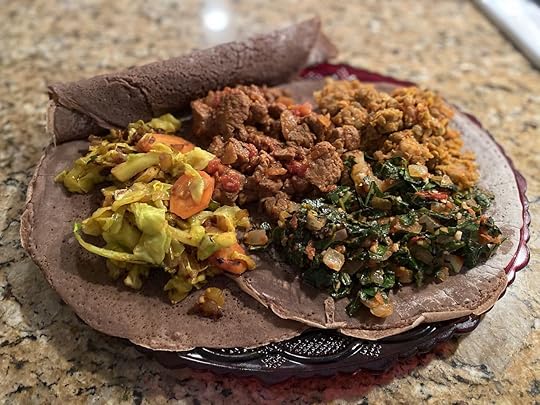
Photo: Brianna Deveraux-Allen
Life plays with the best-laid plans. Shortly after starting, Deveraux-Allen found out she was pregnant with their daughter. Apart from the obvious changes in energy and schedule, new ingredients also meant new smells. The aromas of the biryani and chingri malaikari from Bangladesh pushed her smell sensitivity to its limits. Her four-year project plan extended as she took a pause.
After spending time with her baby daughter, she returned to her cooking across the world project. But one issue still lingered: ingredient sourcing. Deveraux-Allen can order oils and spices, but uncommon produce has to be scouted and sometimes substituted. She tries her best to be authentic with the ingredients, but sometimes it is just not possible.
There was, for instance, the flying fish for the Barbados dish. Not exactly a staple in California markets. She passed on buying the only flying fish option, $200 for a wholesale bulk order. The far more affordable tilapia took center stage.
“Next up is Greenland. Can you imagine trying to source whale meat or Narwhal blubber here?”
Deveraux-Allen has learned to let the small things go and focus on the project’s real benefits: the change she sees in herself and her family.
New family dinner traditions celebrate the world

Photo: Brianna Deveraux-Allen
The project’s passion always comes back to family. It’s hard to create new habits, and the birth of a child is a perfect excuse to bow out of a demanding plan. But Deveraux-Allen persisted.
“Of course there have been weeks I haven’t wanted to bother, and there have been several times I’ve wondered if it’s worth the time, planning, money, and sanity it cost. But then there are the moments that my nieces excitedly ask me ‘which country are we having?’”
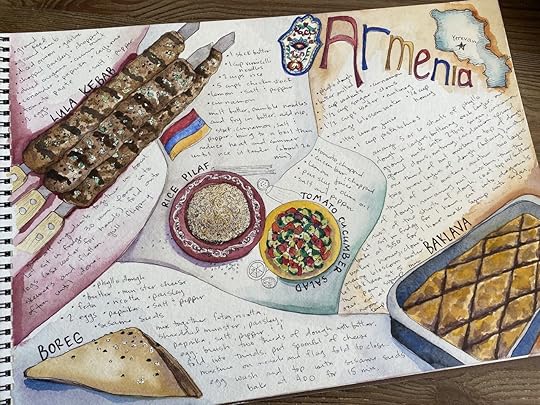
Photo: Brianna Deveraux-Allen
Armenia was the first answer to that question. Her brother’s birthday was the debut family event, featuring lule kabobs, borags, and baklava. It was a complete success.
“Oh man, that meal was good! I think I used three sticks of butter when it was all said and done.”
Now Deveraux-Allen’s nieces make flag tablecloths and find music for each country. The picky eaters, young and old, have become more adventurous. And she still laughs at the video of her and her brother sweating and frantically whisking fufu to keep it from clumping. The family’s new-found connection, both to each other and the globe, keeps Deveraux-Allen going.

Photo: Brianna Deveraux-Allen
“My son is starting to get it, too. Now when I make a meal, he wants to know where it is on that map. He’s already starting to love and appreciate the world and all the many kinds of people it has. If I can give him that through food, I will.”
People around the world join in
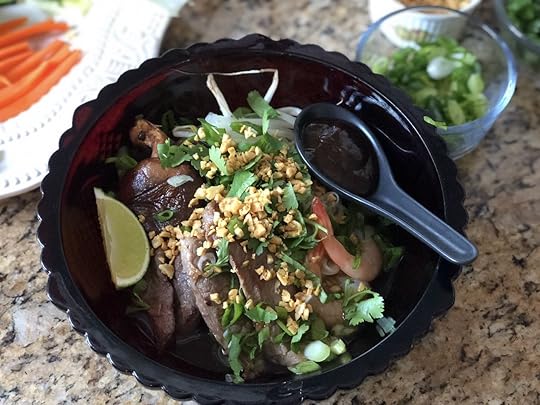
Photo: Brianna Deveraux-Allen
Deveraux-Allen took the celebrations beyond her family. Friends joined in, bringing recipes from German mothers, Lithuanian grandmothers, Ecuadorian travels, or requests for that one dish she just has to make when she gets to Poland. The exchanges were full of reminiscing about beloved relationships and reliving cherished moments from meaningful trips.
“It just warms my heart how excited people get about food and how much it brings people together. Everyone has a relative or someone they know, or a memory they want to share through recipes. Food is the universal language.”
When Deveraux-Allen posted in an international travel group about her experiences and called for F-Z recipes, 15,000 people responded. Many loved the story and begged her to create a cookbook with her sketches. Others joined in with more recipes, more personal stories, and more cultural connections. Her family’s global journey has literally gone global.

Photo: Brianna Deveraux-Allen
“Everybody gets excited. It doesn’t matter who you are or where you’re from. We all have this in common. And it shows that we really do have more in common than we [are] different. Every culture, everywhere, people come together over food.”
While Deveraux-Allen artfully dodges responding to requests for her sketchbook to be published, she makes no secrets about the plan to continue. In fact, that final country count isn’t so clear. She’s already added several regions and unrecognized countries and fully anticipates adding more as she finds delicious recipes. “I can’t even begin to explain the impact this has had on me personally but also on my family. I have learned so much and grown as a cook, an artist, and a person. I’m incredibly grateful for this experience.” 

More like this: This Italian grandma is holding virtual pasta-making classes to keep us connected
The post This family is making a meal from every country in alphabetical order appeared first on Matador Network.

Matador Network's Blog
- Matador Network's profile
- 6 followers



